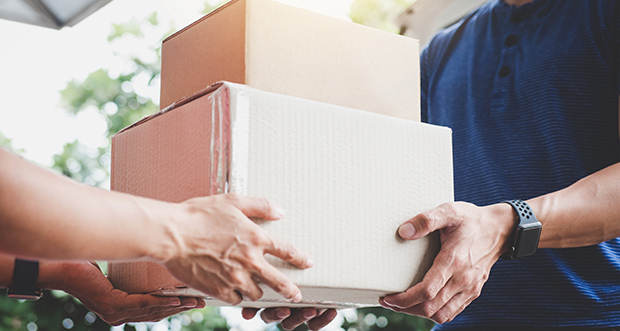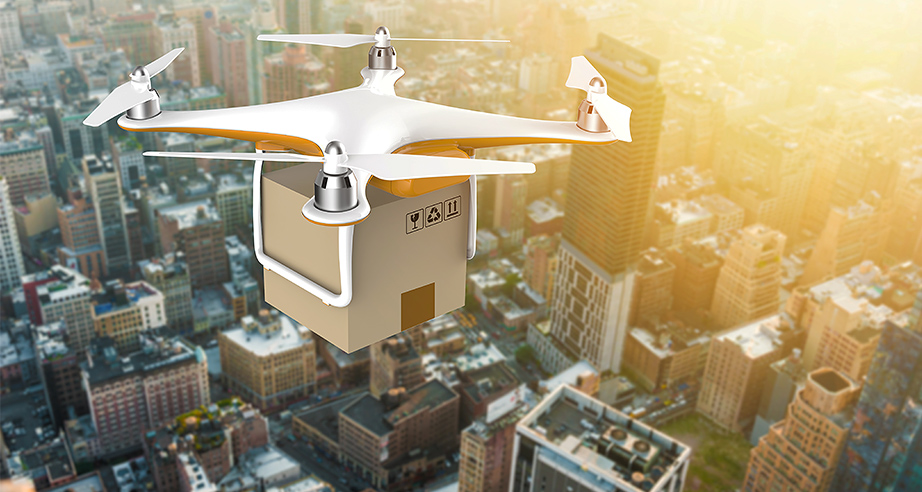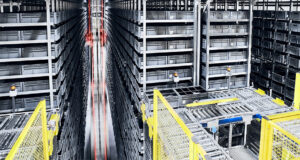The last mile is the most complex and expensive part of logistics. There are several challenges at this stage, each of which requires an effective solution. In the following, we will discuss some of the most common challenges and their solutions.
Delays in delivery times due to traffic congestion → AI-powered route calculation
First of all, there is the problem of traffic jams in urban areas. In big cities, delivery vehicles are often stuck in traffic jams, which makes it easy for delivery time delays to occur. As a solution to this problem, companies are implementing delivery route optimization techniques. It uses GPS and AI to calculate the optimal route in real time and make efficient deliveries while avoiding traffic jams. Deliveries using public transport and bicycles are also being considered. This minimizes the impact of congestion while ensuring faster delivery.
Driver shortage → Improvement of working environment and introduction of autonomous driving technology
Then there’s the problem of missing drivers. In Japan, the shortage of drivers is becoming more serious throughout the logistics industry. One of the reasons for the shortage of drivers is the harsh working conditions, including long working hours. The aging of drivers is also a problem, with a decline in the number of young drivers, resulting in an overall labor shortage. As a solution to this problem, it is necessary to improve working conditions. Specifically, it is necessary to shorten working hours and enhance welfare programs in order to create a comfortable working environment. The government is also taking measures. From April 1, 2024, the overtime limit will be applied to truck drivers. As with other companies, this regulation applies to the principle of 45 hours per month and 360 hours per year, and in special circumstances, the upper limit is set at 960 hours per year. The regulation is expected to improve the working conditions for drivers and encourage the entry of young people. It is also important to enhance education and training programs to promote youth employment. In addition, the introduction of autonomous driving technology can be used to supplement the labor shortage.
Improve delivery efficiency in rural areas → Establish a pick-up point
Another challenge is the low delivery efficiency in rural areas. In rural areas, shipping destinations are spread over a wide area, which reduces the scope that can be covered in a single delivery, reducing efficiency. This problem can be addressed by adding more regional distribution points and shortening delivery distances. In addition, there is an attempt to increase the coverage rate of the last mile by utilizing local residents and stores as collaborators. For example, you can use a local convenience store or post office as a pick-up base for efficient delivery.
What to do when you’re out of the office → Expand your pick-up options and improve your advance notification system
In addition, the absence of the delivery address is also a big challenge. The absence of the recipient will require redelivery, which will increase time and cost. As a solution to this problem, the use of delivery boxes and smart lockers is effective. Even if the recipient is not present, the product can be left at the designated location, eliminating the need for redelivery. You can also reduce your absentee rate by notifying your customers in advance of the delivery time and letting them choose a time when they can pick it up.
Consideration for the environment → Improve delivery efficiency and consider the introduction of electric vehicles
The environmental impact of the last mile is also an issue that cannot be ignored. With a large number of delivery vehicles coming and going in the city, CO2 emissions will increase, and there are concerns about the impact on the environment. In response to this, the introduction of electric vehicles and the promotion of bicycle delivery are effective. By adopting eco-friendly shipping methods, businesses can achieve sustainable logistics and contribute to protecting the environment.
Respond to customer needs → Utilize various systems for delivery management and inquiry response
Finally, it’s important to be flexible and responsive to customer needs. In order to accommodate different delivery times and methods for different customers, you need an advanced delivery management system. There is a need for technology to improve customer service, such as a system that allows customers to check the delivery status online in real time and a chatbot to respond to inquiries.
As you can see, there are many challenges in the last mile, but concrete solutions have been found for each of them. By addressing these challenges, logistics companies can provide more efficient and happier delivery services. It is expected that the last mile of improvement will continue in the future as technology evolves.








